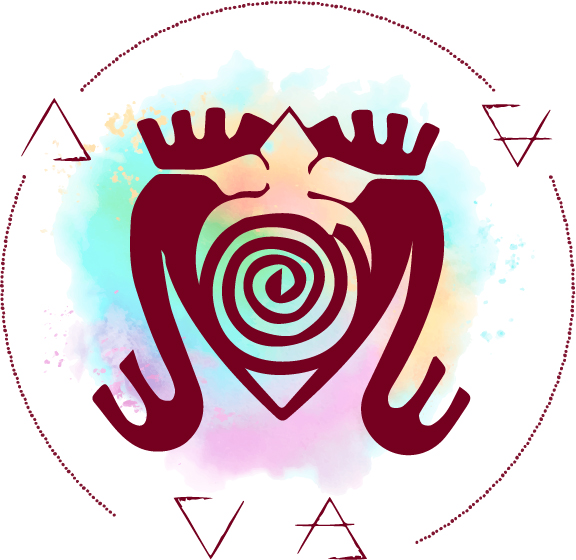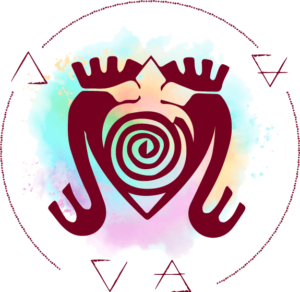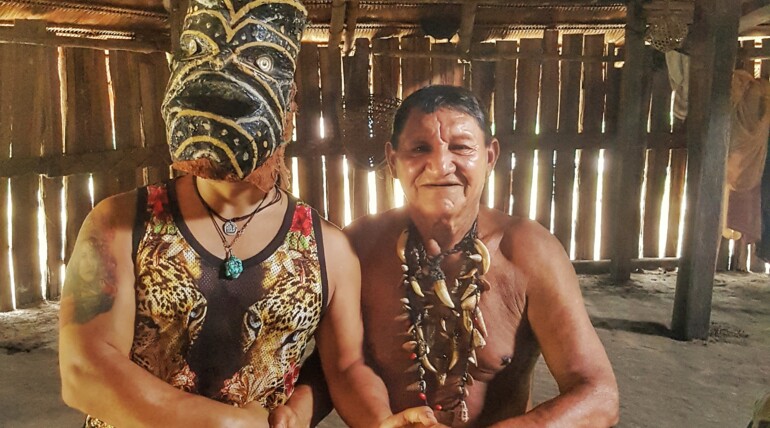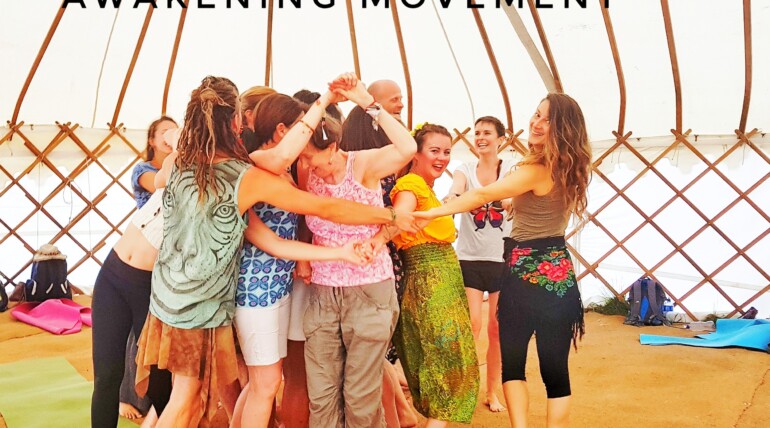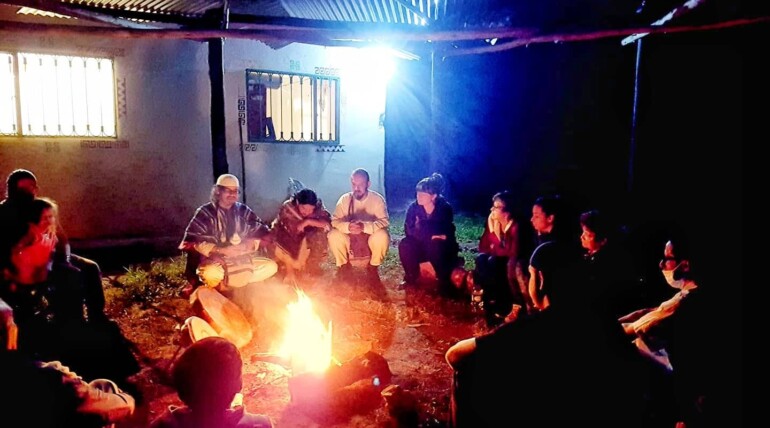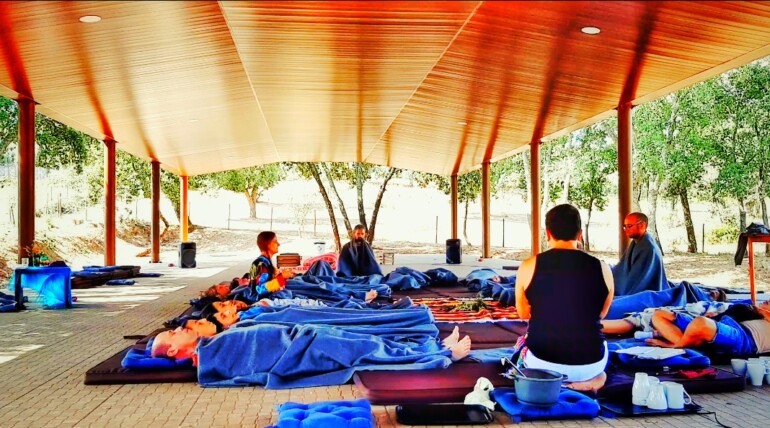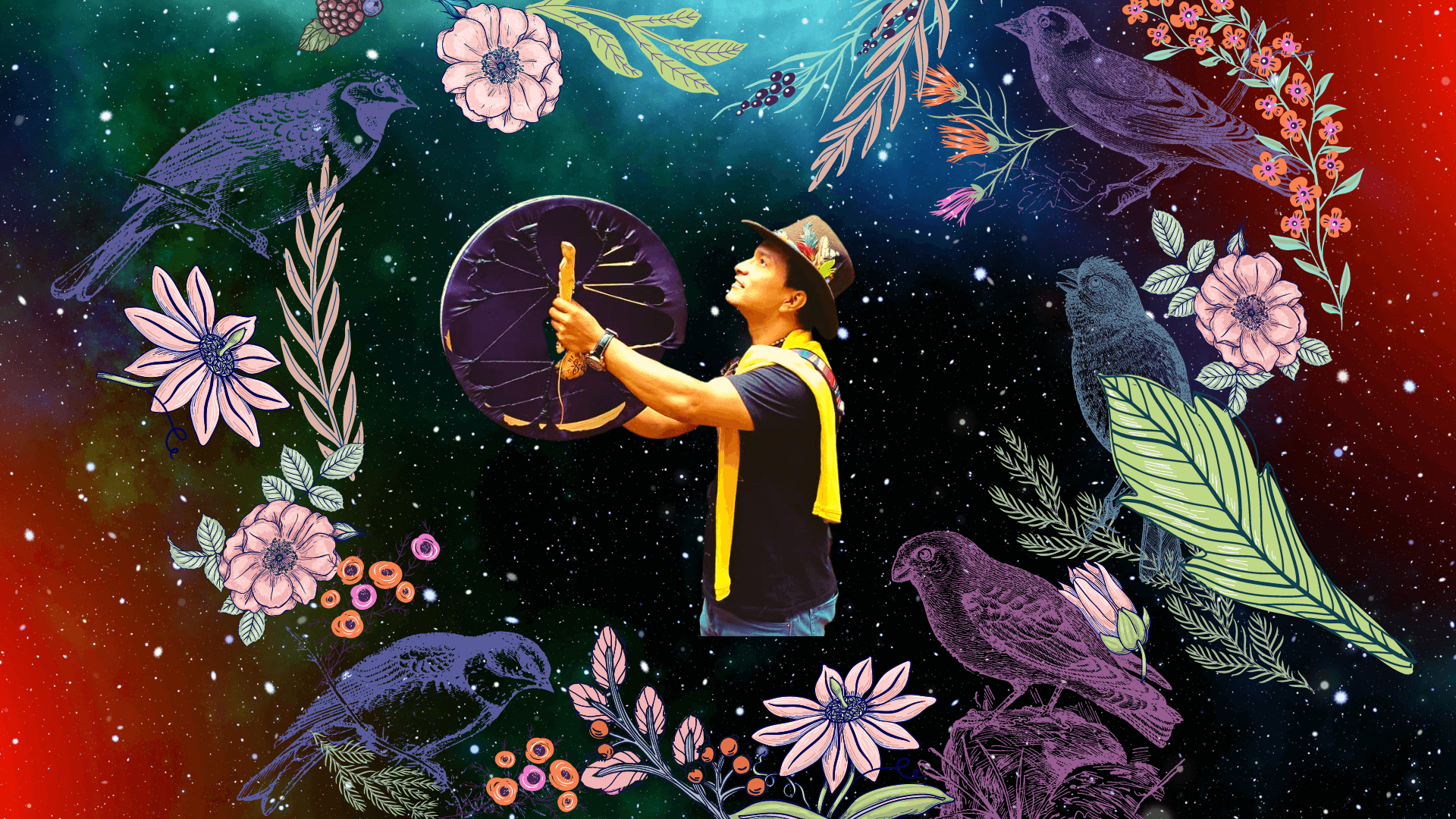
INTEGRATION AFTER SPIRITUAL RETREATS
A basic definition of integration is “to combine two things so they become a whole.” We naturally integrate as we take in new information and generate new perspectives. Simply put, integration is the process of growth and evolutionary change—and humans have been doing this pretty much forever.
When the ceremony is over and it is time for you to go home, it will be important for you to remain committed to some spiritual practice such as meditation, martial arts, yoga, regularly phases of offline and nature. Also stay committed to a healthy, diet. The medicines will expand your consciousness; however, you will need to connect with your inner being on a daily basis to maintain this expansion after you get home.
At a basic level, any sacred journey requires for integration, which means cleaning up your act in support of your newly upgraded self. Job, relationships, diet, habits, mindset— all these are up for transformation in the weeks following the ceremony.
SHADOW WORK
A second aspect of integration involves shadow work, Shamanic Medicines are a potent activator of the unconscious, bringing buried traumas, forgotten experiences, and rejected aspects of self to the light within your ceremony. Integration, in large part, is the process of absorbing and digesting this raw material; quite literally, incorporating it into your consciousness. This inevitably changes your perspective on life, self, identity, and purpose.
As we continue, a third level of integration emerges: the task of bringing soul to the world, showing up as our true whole selves. We begin to cultivate a way of being that is in touch with what really matters.
Our fractured modern psyches have been disconnected from Nature and one another, with consumer ism and digital distraction stuffed into the cracks to assuage the pain of separation.
Truly integrating our work with the medicines provides an opportunity to heal who we are as individuals, and as a species our perceptions, and the world. Through this process we move from blame to responsibility, from drama to dignity, from unconsciousness to awareness. All three of these levels of integration require tools and practices to support transformation—practical ways to work with body, spirit, heart, and mind.
At minimum, we need to know how to deal with difficult emotions and destructive mental patterns, and how to sustain a healthy body that is both grounded on Earth and connected with spirit. If we have any insufficiencies in these areas, any sacred journey will expose them. It’s not the medicine’s job to magically remedy these deficits; it’s our work—integration work—to grow into new ways of being. It might be helpful to recognize that many of us are already walking the path of integration in our lives, and were long before we ever heard of sacred medicines
THINGS TO DO AFTER SACRED SHAMANIC EXPERIENCES
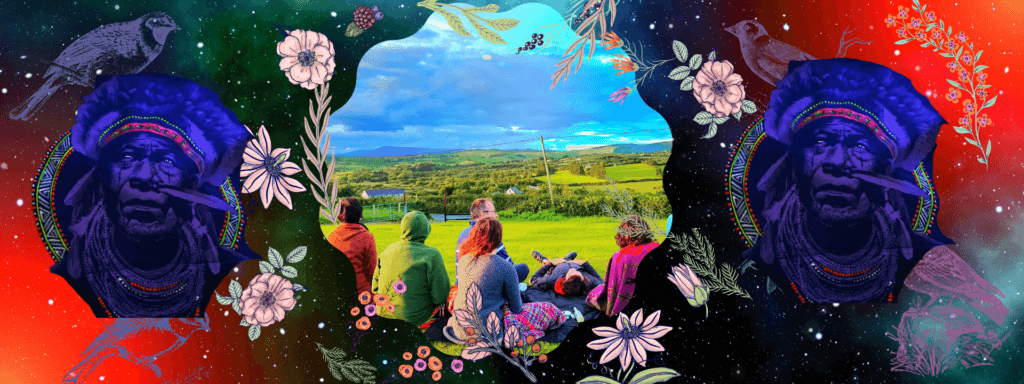
1. LOVING TIME TO YOURSELF
Listen to your body. Ask yourself on a daily basis: “What is the most loving thing I can do for myself today?” Let your body provide you with that answer. You may discover the extent to which you need physical rest, nourishment, or even hydration.
Research has demonstrated that memory is a funny old thing. Usually, we think of memory as a mental CCTV recording the events of our lives, and although much will get lost or decay, the picture itself does not alter as it goes along. In fact, memory is a construct. It is deeply structured by our assumptions and expectations as it is being laid down, and each time we revisit it we create it anew, with plenty of opportunity for change at each iteration. The vast majority of false convictions in a court of law for instance, come from eye witness evidence.
Now, along comes the super-sensory mind-boggling sacred experience, where the only eye witness is you. Every time you recall this unclassifiable event it automatically gets reimagined, and therefore revised, and this is such a natural process you can’t even regard it as self-deception.
The longer you wait to write it down, the more likely you are to wind up with a sanitized or romanticized version of events, because after all, every story improves with the telling. So, write it down, and write it down sooner rather than later—you did go to a lot of trouble to have this experience.
Another good reason to write things down is that the images from the medicine experience are not just a nice keepsake—they can be extremely useful in ongoing emotional healing.
In my work with people in holistic healing, I have found over and over imagery that was on the brink of being forgotten turned out to be invaluable for people in their follow-up work. If we preserve images that may have been fading as fast as a dream, they have a chance to contribute to the healing journey.
That said, for some of us the act of writing may itself be what puts the experience into the linear,
rationalistic box. Or you might find that a different form of expression, like painting, drawing, sculpture,
collage—even gesture or dance—works better for you than words. But if you do not preserve the
experience externally, your job is to create a storage place in your mind and heart so that it stays alive inside you.
Journal. Write about your experiences in ceremony, but also about your thoughts, emotions and sensations in the body. Reread your journal to stay connected to the insights and teachings
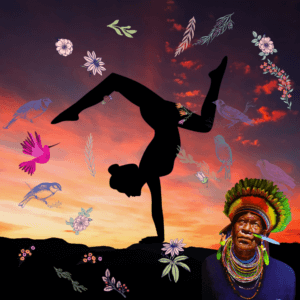
- WRITE IT DOWN
Research has demonstrated that memory is a funny old thing. Usually, we think of memory as a mental CCTV recording the events of our lives, and although much will get lost or decay, the picture itself does not alter as it goes along. In fact, memory is a construct. It is deeply structured by our assumptions and expectations as it is being laid down, and each time we revisit it we create it anew, with plenty of opportunity for change at each iteration. The vast majority of false convictions in a court of law for instance, come from eye witness evidence.
Now, along comes the super-sensory mind-boggling sacred experience, where the only eye witness is you. Every time you recall this unclassifiable event it automatically gets reimagined, and therefore revised, and this is such a natural process you can’t even regard it as self-deception.
The longer you wait to write it down, the more likely you are to wind up with a sanitized or romanticized version of events, because after all, every story improves with the telling. So, write it down, and write it down sooner rather than later—you did go to a lot of trouble to have this experience.
Another good reason to write things down is that the images from the medicine experience are not just a nice keepsake—they can be extremely useful in ongoing emotional healing.
In my work with people in holistic healing, I have found over and over imagery that was on the brink of being forgotten turned out to be invaluable for people in their follow-up work. If we preserve images that may have been fading as fast as a dream, they have a chance to contribute to the healing journey.
That said, for some of us the act of writing may itself be what puts the experience into the linear, rationalistic box. Or you might find that a different form of expression, like painting, drawing, sculpture, collage—even gesture or dance—works better for you than words. But if you do not preserve the experience externally, your job is to create a storage place in your mind and heart so that it stays alive inside you.
JOURNAL
Write about your experiences in ceremony, but also about your thoughts, emotions and sensations in the body. Reread your journal to stay connected to the insights and teachings
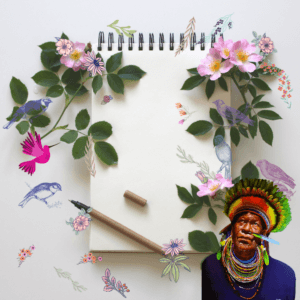
3. COMMUNICATION WITH OTHER PEOPLE
Once the sacred retreat is over, does it feel useful to you to talk to other people about what went on? If the answer is yes, who should you pick—people who have had a similar experience, or people you are close to and trust? Maybe you’re lucky enough for them to be one and the same. LIKE YOU ALL COSMIC FAMILY MEMBERS.
If you do decide to have a conversation, it’s good to figure out ahead of time what your need is. You might essentially want to vent and have the other person hold space and listen, or you might be keen to get their comments, feedback and advice. These are very different kinds of conversations, so it’s good to let the person know what you need ahead of time, so you’re not talking at cross purposes. Sometimes you want to say, “Right now I’d like you to just listen while I get this out…” and other times you may say, “I’d really like to know what you think about this.”
Likewise, you need to pay attention to the other person as you’re speaking. Are they engaged and interested? Are they glazing over? Are they looking discomforted? If their attention is flagging or they are looking weirded out, you might want to wind things down or let them take a break. Like any other conversation, your job is to make sure the other person is still engaged and connected with you, and things are alive on both sides.
Also, sometimes so much new information gets downloaded into us that we think we need to let everyone know about it as soon as possible, Actually, no. Hesitate after you have taken the medicine and hold back on converting the world. Your uptight coworker and your auntie in from a small village will be very grateful .

4. SET AN INTENTION
An intention comes out of a conversation you have with yourself where you figure out the things you most deeply want and how to ask for them with precision. Intention before and after your journey are to deepen your experience. You frame an intention with clear and simple words, none of the ifs and buts of regular speech, so your inner world can process it.
People preparing to take the sacred medicines are often invited to set an intention, and it may come out something like, “I want to change such and such a thing in my life,” “help me let go of this troubling mood,” or “let me find my deeper self,” and so on. During the medicine itself, it’s possible that your intention may help you negotiate the experience, make it more coherent and deepen your learning.
Once it’s all over, your intention may be due for a tune up. How will it be revised or deepened now, or has the medicine made it redundant and given you an entirely new focus? If your intention when approaching the medicine is about what will happen across the next few hours, the intention you set after the medicine will be about what will happen across the entire arc of your life.
Let’s say that when you took the medicine and your intention was to overcome anxiety. Now that you have been through the medicine, your relationship with the anxiety may have changed. What you used to see as a plague that ruined your life that you wanted to get rid of now might seem more deserving of your kindness, and you may want to help the poor thing out. If so, then your new intention would reflect this change and “rid me of this anxiety” might turn into “help me accept the anxious part of me so it can heal.

5. IT’S NEVER TOO LATE TO HAVE A GOOD JOURNEY
it’s never too late to have a happy childhood, as somebody famously wrote, it does meant that we always have the chance to rewrite our internal narrative of a difficult childhood from, say, a chronicle of suffering and victimhood to a journey of resilience and survival. We might even notice happy times we had previously discounted. In exactly the same way, it’s never too late to have a good trip, no matter what opinion you had of it at the time.
Some “bad” journeys are a temporary matte, in fact in indigenous traditions doesn’t exists the term ‘bad’, as all is conceived from the point of transformation with the inner-self. The sacred experience is normal conscious experience squared, or cubed, or maybe a couple more. If your regular ego fears get triggered, they can hit the echo chamber of your tripping mind and turn from vaguely concerned to freaked out. Once the medicine experience is over though, this kind of fear usually calms down and most likely normal service will quickly resume
But some challenging experience or journeys take us to harsh places we are totally unprepared for, where fear and terror are the natural response. As the poet T.S Eliot said, “Humankind cannot bear very much reality.” A visit to a place of such pain that it seems unbearable, or a place so alien it is totally unnerving, a Mordor of the mind populated by malevolent beings, or a place of agony and death are all experiences that may continue to seep into your regular consciousness after the medicine experience itself is over. Then it can be a harder job to put all pieces of puzzle back together.
C.G. Jung, the psychologist who was also a bit of a seer, said, “The greatest and most important
Problems of life are all fundamentally insoluble. They can never be solved but only outgrown.” Overwhelming bone-juddering, fear can’t be solved, but it can be outgrown. This growth is what Jung called the individuation process and Joseph Campbell called the hero’s journey. In this journey, you broaden your sense of self from purely ego-based you to you as spirit. Spirit You has the resilience and fortitude it takes to get through the harsh places.
Besides being a trauma, maybe the ass-kicking of your challenging journey was the push you needed to get started on the hero’s journey. What doesn’t kill us makes us stronger, and the medicine that doesn’t kill us or drive us crazy can certainly make us wiser. The medicine will sometimes knock us out of our complacency, but it never signed an agreement saying it would do so nicely. Someday, though, you may be grateful for the shit-show of your sacred shamanic experience
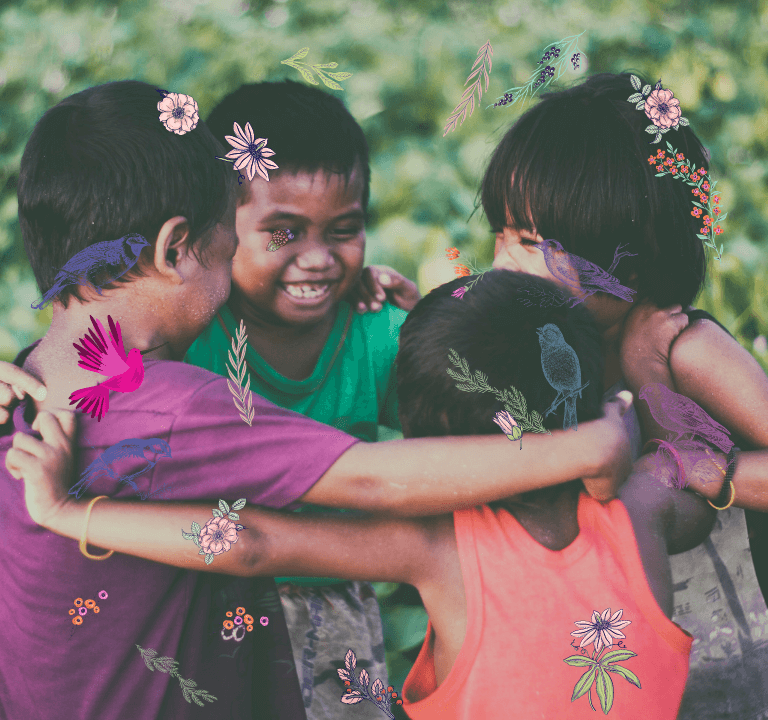
6. GIVE YOURSELF A BREAK
In my therapy practice with people who have coming to sacred ceremonies, I often have conversations where people think their experience was a bust, or that there was something wrong with them for not having an amazing experience. In fact, even if you didn’t talk to God/Source/Divine or turn into an eagle, you may still be doing just fine.
And even if you did talk to God and turn into a puma, you are still faced with the task of making that experience useful in your mundane, ongoing life. Reports of ego death, as Mark Twain once said of himself, have often been greatly exaggerated.
Because western culture has no many old traditions alive around sacred medicines, people are not adept at understanding them. Maybe you quietly thought a valuable experience was one where you got lots of visual imagery or deep insights, or the meeting with God thing, but instead what you got was much more sensory-based, or emotional, or even auditory; maybe you hoped for an answer to a particular question and the medicine changed the subject, or maybe you asked to see heavenly light and what you got instead was a bunch of visions with not shape
Pay careful attention to what you did get. What can you explore about the meaning? What if the
medicine is wiser than you are? A client of mine felt like nothing much happened in his journey, but when I asked him about it he said, “I can barely remember anything at all, yet it was a movie that kept playing over and over. I think I turned into a tree. It seemed to be about returning to nature for healing.” That turned out to be a fantastic gift for him with life-transforming potential.
So, if you didn’t have a spiritual peak experience, cut yourself a break and go easy. It’s a challenge, once you’re back in the ego world, to understand an encounter with immensity with equipment that is far from immense. The medicines are our sacred excavators, and sometimes our expectations are what get shoved aside.
Reconstructing and making meaning out of what happened is a subtle and painstaking task.
Recall “positive” ceremony experiences. Take some time to remember those moments in ceremony that were especially joyous, connected, loving, or ineffable. Invite those experiences into your body and let them ground you in the here and now.
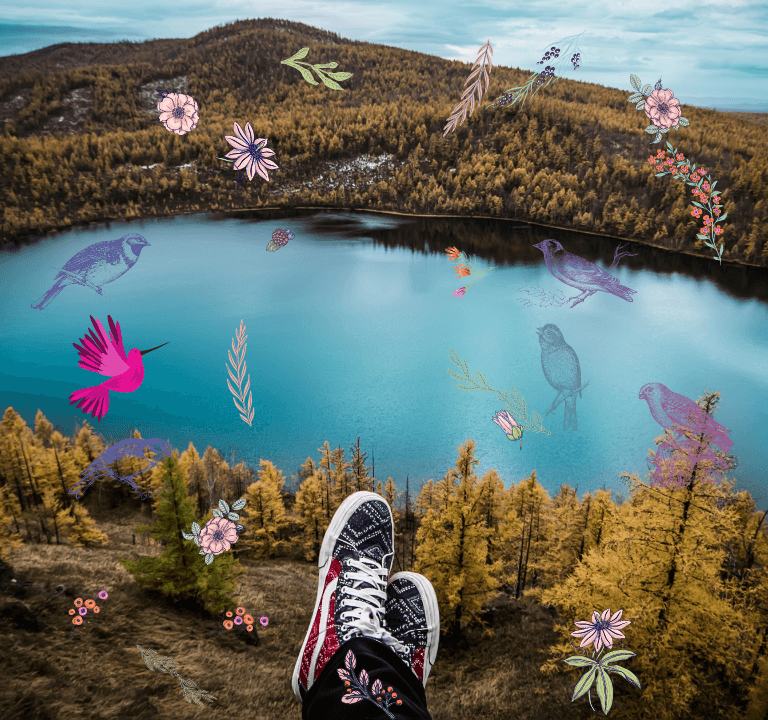
7. DO SOME EMOTIONAL HEALING
By emotional healing, I mean a spiritual/emotional modality of healing that directly follows up on the action of the medicine. It will speak the same language as the medicine, and the methods
I am most familiar with are shamanic journeying, holotropic breathwork often at my ceremonies, Shamanic journeying comes from the same kinds of traditions that medicine ceremonies come from; holotropic breathwork gets us into an altered state that is recognizably similar to the plant medicine state; any modality that work with imagery, emotion and body energies to heal the pain and the blocks inside us are useful
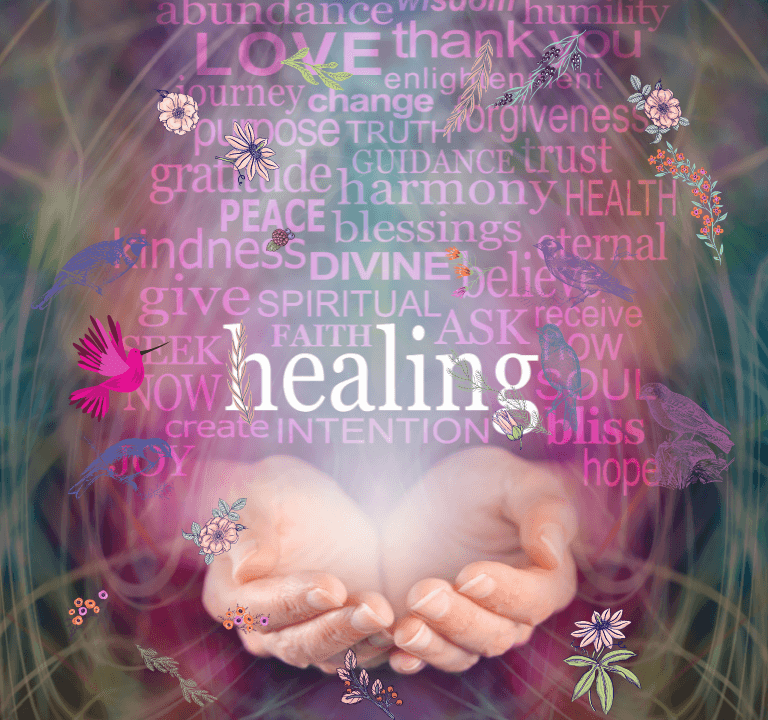
8. DO AN AWARENESS PRACTICE
They say that the journey of 10,000 miles begins with the first step, but the remaining 17 million or so steps shouldn’t be forgotten. That’s where an awareness practice comes in, because a lot of the qualities that an awareness practice develops—equanimity, awareness of course, clarity—are exactly what we need for entering a medicine experience and for absorbing its content after it’s done. If the medicine ceremony is an spiritual surgery, then an awareness practice is the diet and exercise regimen the doctor tells you to do afterward.
The practice you choose may be meditation, but it could as easily be yoga, qi gong or anything else that speaks to you. It might be a walk along the river or staring at a fire; whatever draws you closer to yourself and inner freedom of heart.
Every session of awareness practice is a mini piece of the letting go, a further sorting through the debris we have inherited and accumulated as we make our way through life. A word of caution though, sitting around ruminating about how life sucks and people aren’t fair is not the same as meditating, and it is good to get yourself exposed to some kind of a formal awareness training. If you work with sacred medicines on an ongoing basis, an awareness practice will be a tremendous support. It’s a sort of hare and tortoise collaboration where the slow work of the practice deeply informs the speedy and explosive work of the medicine.
In the awareness practice, you absorb the lessons of the last medicine ceremony and prepare for the next one by increasing your capacity for fortitude and attentiveness. Going from one session to another without enough reflection puts you at risk that the next medicine experience will be a rerun of the lessons of the last one, a spiritual Groundhog Day of the soul.
9. KEEP YOUR FREQUENCY HIGH
As a Shamanic Healer & Psychologist , I’ve found that the issue of boundaries can get very real. In fact, the more we contact our bodies and health and our emotions, the more “sensitive” we are to toxins, to yelling on the street, to pollution, to others’ deep and dark emotional states. Especially after experience of medicines your receptors can get wide open. For some this may be very unconvertable, for those without energy healing experience this might be quite a challenging process.
If you’re a person who works with other people (most of us), you are susceptible to energies that aren’t yours and it’s especially important for you to keep your new-found alignment, light, and magic to the highest frequency of you.
All matter in the universe is made up of energy. If you look at yourself under a microscope, you will look quite different than you do when you look in the mirror. At the core of who you are, you are more energy than matter. Acting as a perceptual centre that transmits and receives information from the body and the environment, The Human Energy Field (HEF) is an electromagnetic field located 1-2 meter from your physical body. Your energy body and the energy bodies of others are constantly interacting. Some- one may even be in your energetic space without being anywhere near you physically.
The field holds your history. Your thoughts, beliefs and life experiences are recorded there. The tone in which you send and receive energy creates the pattern in which you live your life. Store more joy, live more joy! Imbalances and disruptions in the flow of energy can be the root cause of unhealthy emotional and physical conditions. The good news is that it is not difficult to give your energy body a good scrub.
Cultivate your spirituality. Religious and spiritual practices are positively related mental and physical health.12 Pray to God, to Creator or to universal love. You don’t need to be clear about your religious or spiritual identity to ask for external support, guidance, and reassurance that life is unfolding as it should
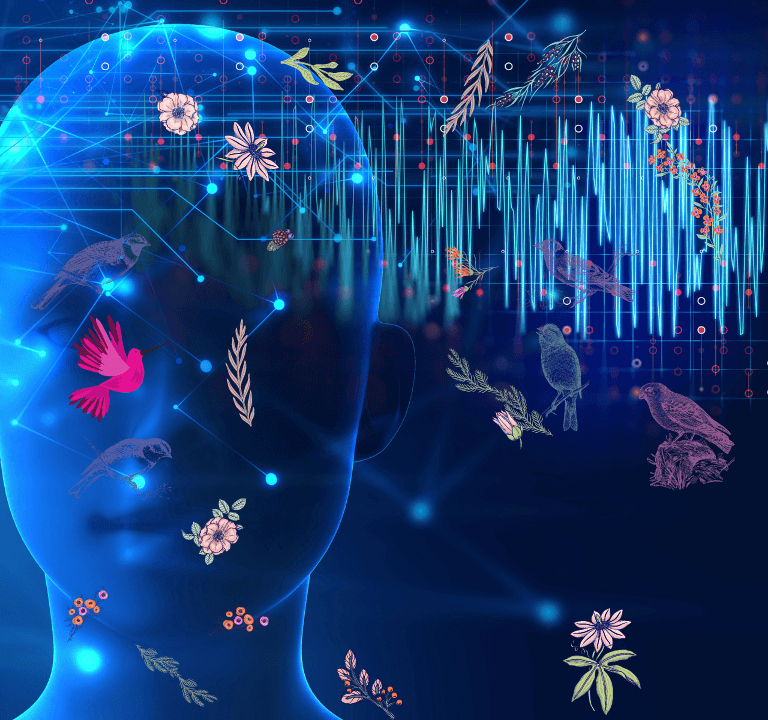
10. ENERGY FIELD MEDITATION
Meditate. The benefits of meditation are well documented and include enhanced physical functioning as well as an improved capacity to regulate one’s emotions.8 Vipassana, Zen, The Presence Process, etc.: find the fit that is right for you
∆ Imagine yourself sitting in the centre of a circle of light that extends 1-2 meter from your physical body.
∆ Focus on your breath and with your intention bring your awareness to your circle.
∆ It may be helpful to breathe in to your circle with your inhalation and breath out to the edge of your circle with your exhalation
∆ Become present to the energy in your body. Notice how you feel–Where are you experiencing areas of stress, anxiety, pain or discomfort? Softly breathe into those areas.
∆ What energies are needing to be cleared? For example: A constant thought that won’t go away?
Anger over a conversation with a friend, worry about a sick relative?
∆ Whatever the experience, bring it to mind and with love and intention, gently place that thought,
or that feeling outside of your circle. Visualize it on the other side. Continuing to put whatever is no longer serving you outside of your circle.
∆ As you gently see your thoughts and feelings outside your circle, notice how your body feels. Has the pain shifted, the thought left, the anxiety lessened? Any of these indications means you have cleared your field and your body of that energy.
∆ Bring your awareness back into your circle. Focus on your breathing. Is there anything else you see, feel or sense that needs to be released? Continue with this exercise until you feel lighter, calmer and more at peace.

11 CLEANSINGS.
Salt/Himalayan salt is one of my favourite energy cleansers. Used through the ages for purification, salt water is incredibly powerful. I recommend putting a container of sea salt and or baking soda in your shower. When it’s shower (or bath!) time, put the salt on your hands and move it over your body (I often touch different chakra points while doing this, asking for each to balance).
Then affirm (out loud or in your head). “With this salt, I purify all my bodies (emotional, physical, mental, and spiritual). I release anything that is without my highest and best intention.” If you’re in need of more heavy-duty cleansing or relaxation, take a bath with baking soda.
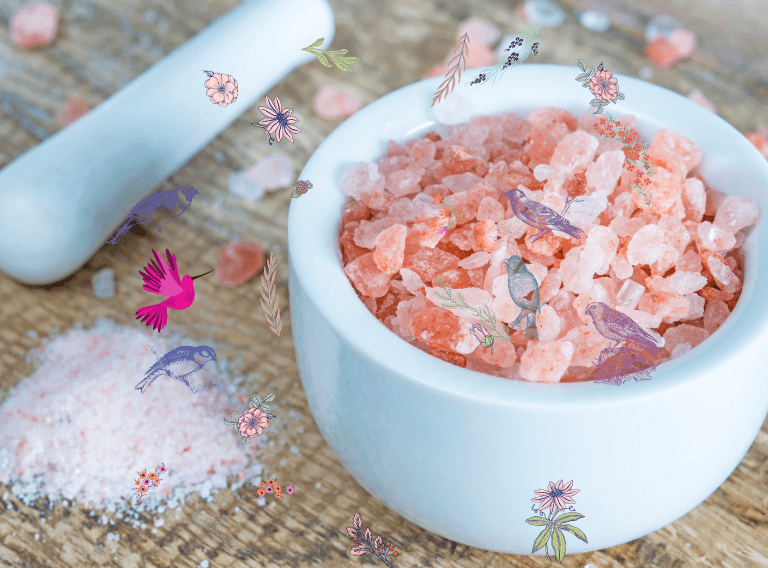
12. SAGE AND SMUDGE EVERYTHING
Smudging is traditionally a ceremony for purifying or cleansing the soul of negative thoughts of a person or place. There are four elements involved in a smudge: The container, traditionally a shell representing water, is the first element.
Palo Santo. Incense. Sage, Frankincense, Cedar, Sweetgrass, Lavender, Myrrh…and more, whatever you have with easy access to. Burn that stuff. Over your body. In space. Ask for clarity. Say a brief (lovingkindness) meditation you do it:
“May all beings be happy, healthy, free from danger. May with peace and ease.” Sometimes I start sageing when my head is dense deep emotional thoughts
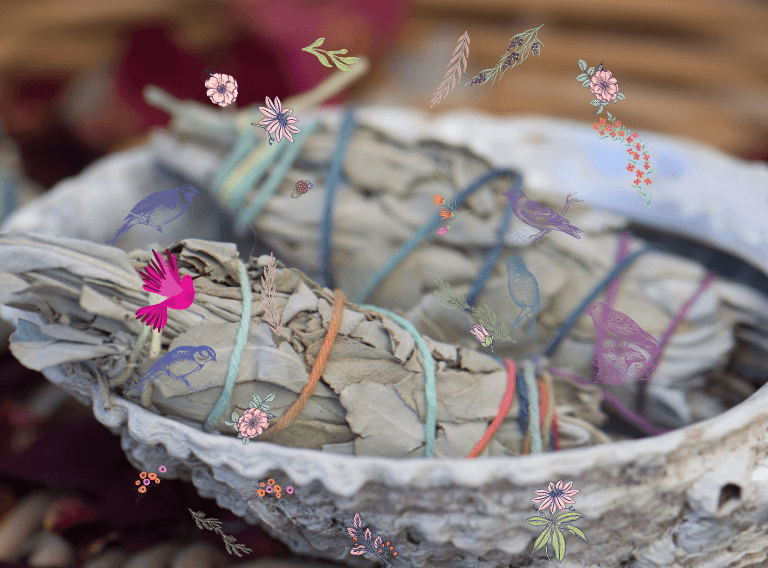
13. CLEAN YOUR SPACE
This might sound a little basic, but — the environment affects us constantly, why do you think all yoga s and spiritual havens are kept meticulously clean? Have you heard of clean home, clean mind? It’s a thing. Clean your s friend. Throw out old objects. Move things around. Shift the space of the room. Feng shui is real.
Let your external environment influence your internal environment in a good way.
Integration-Friendly Environment
- Take time for yourself. Take time off from school, work, or extracurricular activities. Healing with Plant Medicines can be regarded as spiritual surgery. And, like any surgery, rest and recovery time are essential. You may also plan for a gradual return to normal activities.
- Avoid harshness. Whether in the form of loud noises, scents, or even sights; take a break from things that are jarring. You may even avoid the news for a while.
- Engage in soothing practices. Take a bath. Listen to soothing music. Snuggle with your pet. Drink comforting tea or sink into a comfortable bed.
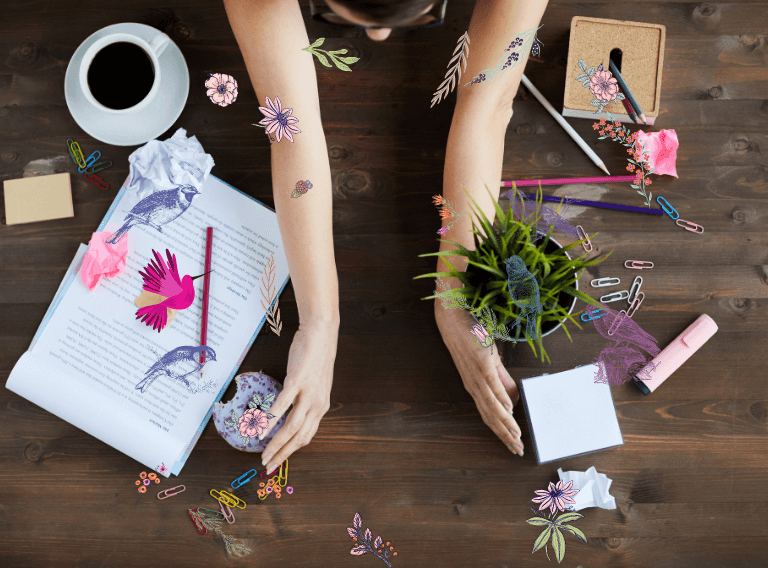
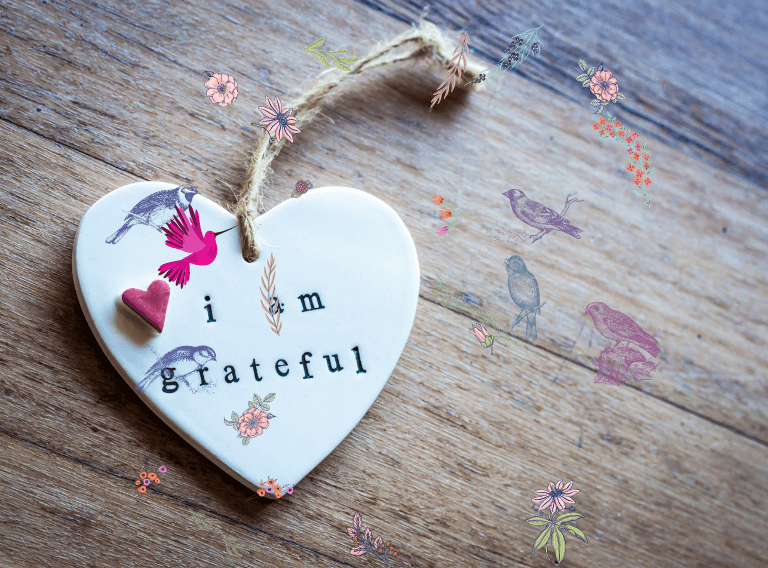
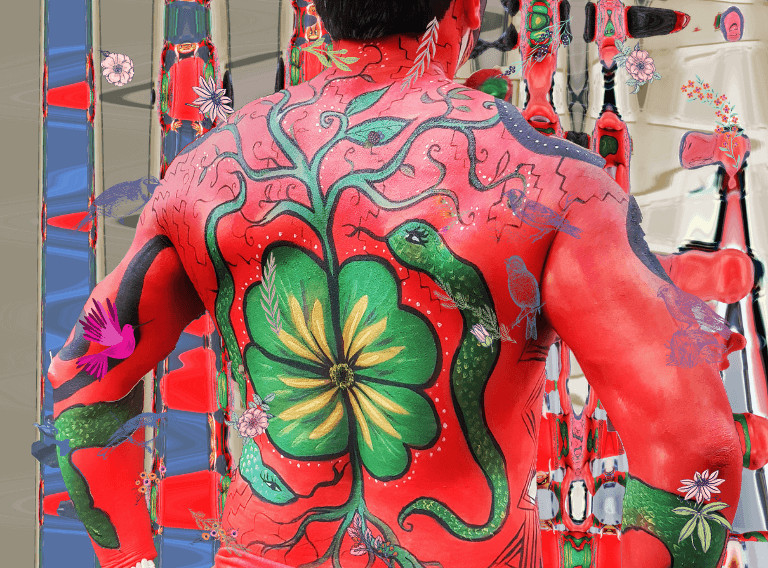
14. RELEASE INTO THE EARTH
The earth is strong. The earth can hold big emotions. When in doubt, squat down, put your hands on the earth, and affirm “Mother earth, I give this energy back to you. Please absorb it. Thank you, thank you, thank you.
Connect with your body. Go for a massage, practice a martial art, or engage in yoga or mindfulness. There is a growing body of research relating to the mental health benefits of increasing the connection to one’s body.
Spend time in nature. Purposefully reflect on your experiences and feelings in this setting. Take advantage of the direct and positive impacts of nature on well being
SHAKE THINGS UP
Dancing, moving your body, and shaking are great for moving energy and coming back to your- self. Set a timer for ten minutes and play your favorite tunes. You’ll be so pumped that you did, and you’ll feel yourself more than before
IMAGINE A BOUNDARY, IMAGINE A ROSE
Draw a boundary around your body like a bubble. Pick whatever colour is calming to you. I like to imagine white or sparkly light. Then I switch it to gold, green, or pink. If you’ve sensed that you’ve picked up someone else’s stuff, see a rose inside your body. Let the rose open and blossom with all that person’s energy. Now send the rose out of your body and into the sky. Let it dissolve into pearly, iridescent, white light, purifying everything.
A good friend recently said to me, “Setting a boundary is an act of love.” And I love that.
So, set your boundaries as an act of self-love. You have taken the time to journey with the medicine so honour yourself all the may including the process in the aftermath and integration.
Practice gratitude. Make a daily list of people and things for which you are grateful. Not only does the practice of gratitude act as an antidepressant, it increases access to positive memories, among other positive outcomes.
Read books. Ask friends and professionals for their favorite contemplative and integration-supporting books. Some of our favorites include Eckhart Tolle, Jack Kornfield, and Adyashanti
Get creative. Write, draw, paint, sculpt, even if you have zero artistic ability. Creative activities can have a healing and protective effect on mental wellbeing. They can also promote relaxation, reduce blood pressure, and even boost the immune system.
Clean up your relationships. In the words of Rumi: “Be with those who help your being.” Invest in nourishing relationships that promote healing and growth. You may also avoid toxic relationships until you have the strength to change their course through assertion, forgiveness, or letting go.
CONCLUSION
In the following weeks, months… the medicine is still will be ‘’working’’ within you. Matters, triggers, programs might come up in a very clear and conscious way for you to transform.
Integration sessions are therefore a vital element to your transformation process. This will help you tap into the inner peace of your being that has always been there, and it will also help you integrate the teachings and healings that the sacred ceremonies have provided for you.
The sacred medicine ceremonies are not a just one of thrill but a sacred live changing process that needs to be held in all its sacredness. You might have insights, questions, triggers and awakened parts of your being and you can start to feel quite detached from your day to day live.
Thank you for taking the time to read this information! I look forward to continue sharing with you these deeply profound ways of Sacred Healing!
Infinite love & respect
Thanks for coming to be with YOU !!
